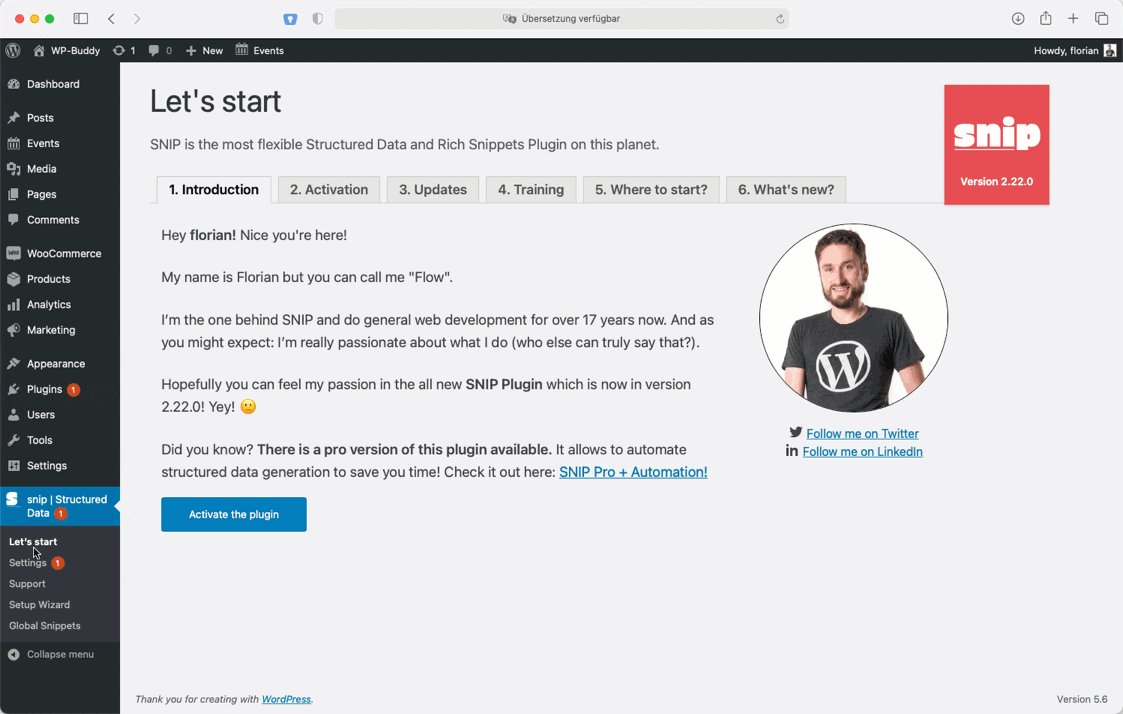This is the third part in my series “Plugin Journey“. This blogpost is about coding. More specifically, about coding a feature to make my plugin easier to use. To make it easier to use even for the not so savvy user.
As I described in the first article, the series came about because I read the book “Traffic Secrets” by Russel Bruson and in there he said you should share your journey with the product with your customers. That’s what I’m trying to do here. And that’s why there’s another blog post.
What makes a plugin easy to use?
This is, of course, the question that arises in general. But it wasn’t always like that, because the history of my plugin is long. It has been online since 2012.
The story of my plugin
I programmed it back then because I wanted a plugin that would make it easier for me to include all my Structured Data in WordPress. At that time the plugin was still a kind of a shortcode builder. You wrote an HTML code (because the JSON+LD format didn’t exist yet) and then inserted the shortcode into an article. Quite cumbersome actually, but it solved my problem and in the end it was just for me.
A short time later I decided to sell it at CodeCanyon. Why not? I could share my little program with other people. And so the journey began.
Simplicity was never intended
Basically, I didn’t care if my plugin was difficult to use. Because it served its purpose for me. And others had to get used to it if they wanted to use the plugin.
It became easier to use when I updated to version 2.0. With that the Structured Data Generator was added to the plugin. Also you could now integrate Global Snippets. Build them once and then have them play out everywhere you want. Amazing! Suddenly the plugin was not only usable for the total nerds among you. 😉
Simplicity is now a must
Now a new change is on the way. The plugin must now become easier to use, because otherwise it will probably rain bad reviews at WordPress.org. And that is not only a bad sign for the PRO version but also bad for my private life. After all, I also earn a living with the plugin.
This ultimately brings me back to the question: Why make the plugin easier to use at all? The answer is simple: The target audience at wordpress.org is quite different than at CodeCanyon.
As I know from myself, you quickly install a free plugin from w.org to test it. If the first impression here is not really good, it is quickly deleted again. Sometimes (and unfortunately) with a bad rating.
Basically, my goal (now at the beginning at least) is that future customers have a good user experience after they installed the plugin. I would like to answer the question: How can they be ready to start as soon as possible after the plugin installation and use their first structured data in WordPress?
Setup-Wizard: Prototype #1
The setup wizard was actually already planned for mid-2020. But for the reasons already mentioned, I could never integrate it into the plugin, although a large part was already finished. Unfortunately, I also have to admit that it was way too complicated. Namely, the Structured Data Generator was integrated with it. I think this puts off a lot of customers. That’s why I had to find a way to make the whole thing simpler. The solution? Just don’t integrate it! 😉
Here is my first prototype:

As you can see, there is currently a second intermediate step, but I would also like to omit it. But the second step is still necessary at the moment, because there are of course several scenarios how a user uses certain schemas. An event schema can be provided with overridable values or linked to a plugin. For example with “The Event Calendar” plugin. In the future there will be even more options like the ones you can see in the screencast.
When will the setup wizard be integrated?
Preferably already yesterday! 😉 But it is like it is: Not everything works overnight! What I’m also missing at the moment is that certain schemas have dependencies. For example, I would like to integrate a WebPage schema with an article schema. Simply to be able to map a schema graph later on.
Let’s see where my further journey takes me.
What’s up next?
Just now I see that I have already written far more than 800 words again. Crazy, how fast that happens!
Now only one thing is missing: What do I have to do next to meet my goal: More traffic?
First, as I explained above, I need to make the free version easier to use. Second, I need to keep working on Brunson’s traffic strategy. That is, write blog articles. And for that, I’m currently still missing the keyword research that needs to precede the whole thing.
But I will write more about that in the next article.
Stay tuned!